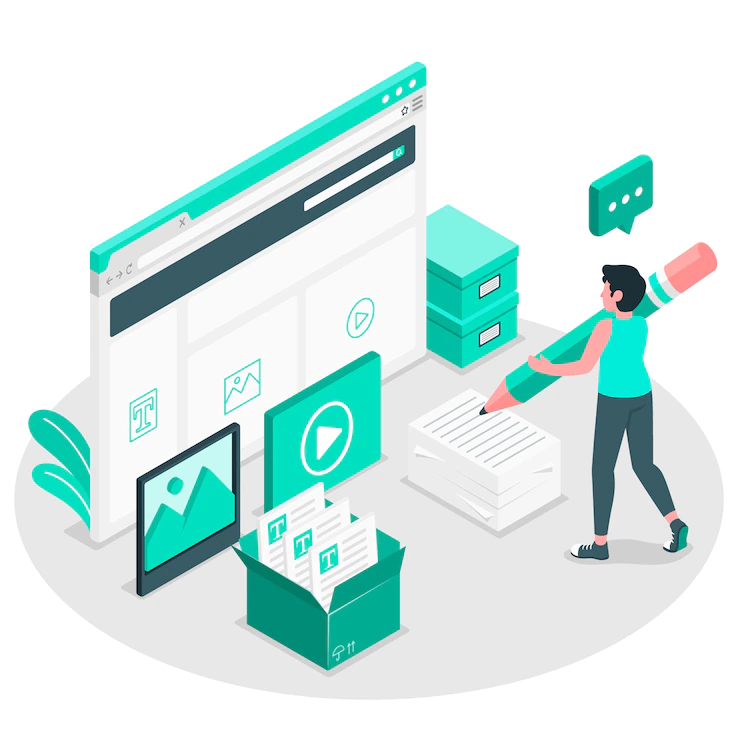Every employee’s requirement for content cannot be the same. Some must be looking for quick answers, while others must be looking for the whole guide. Because of this simple reason, content variation is important.
A single spoon cannot feed all, and a single resource cannot help all the employees. This is the reason why content variation is extremely important for organizations to succeed. It is important for organizations to create value for their employees and not just give them some resources as part of their company requirements.
Let us see how content variation will help your employees acquire better skills and also help you as an organization to make your employees more productive.

Give them better value!
You must be aware of the term ‘modality’ which means transferring resources as per the requirements of the individual. It can be based on sensory channels like audio, videos, or others based on the requirements of employees.
But modality is broader than that; it also includes the type of content you want to distribute to your audience and building the ideal content plan.
What are the different modalities for learning content?
An organization should work on the VARK model to provide the employees with the ideal resources that will help them upskill.
Before getting into that, let us understand exactly what the VARK model is.
V- Visuals, which includes all the sight graphics
A- Audio includes all the resources that can be heard or spoken
R- reading and writing, which includes all the resources that can be displayed as words.
K- Kinesthetic includes the hands-on experience of an inclusive training program.
With the accessibility to different resources, you must know how to utilize these appropriately. Providing useful content not only helps your employees but helps your organization as well to have more productive employees.
Content variation is important for any employee’s growth and any company, it is important it understands the employees’ requirements and creates courses.
With the revolution in technology and market trends, it has become more difficult than ever to create training programs and introduce content variation.
What are your goals?

To make any training program effective and decide upon the valid content, you must determine your goals. The primary purpose of any training program is to develop new skills or behavioral changes in the employee.
Here are some of the specific purposes that you can think of for your training programs:
1. Higher productivity
Training helps improve employee engagement, which eventually helps improve the productivity of the employee.
2. Higher employee retention
Continuous and effective training will help the employees retain more knowledge and train them to upskill. The employees will feel more valued and will also be better prepared for their job roles.
3. Smaller skills gaps
Training will help fill in the skills gaps and help the employees to be more confident. It will also give you a competitive edge when all your employees are working to their full potential.
4. Manage changes
Employee training helps employees adapt to the new changes a company has to go through. With training, they will be easily adjusted and develop the skills for the new role or new opportunity.
Challenges in building training programs

While building training programs, there might be many challenges that you might face. Hence, it will be easier for you to address the challenges when you know them beforehand.
Let us discuss the few challenges that you can face while compiling your training programs:
1. Employee Buy-in
When you are introducing your training program, it is important to get employee buy-in. Before executing any training program, your employees must know what will be expected of them, this will enhance the impact of your training program too.
2. Measuring success
After your training program, it is also important that you measure the success of the program. It’s not an easy task to follow up, gather information, and determine how the course has benefited your audience. To create the best training courses, you must first analyze how your target audience used the course.
3. Remote and hybrid workers
A rise in remote and hybrid work has resulted in difficulty in deploying training programs. It has become difficult to manage teams with the lack of face-to-face conversations which leads to miscommunication many times.
4. Balancing the L&D
Managing the learning and daily tasks is also tough, and your training should fit into your employees’ routines. They should not think of the training as a burden but rather appreciate the added skills.
How do I build training programs?
You can make training programs in simple ways that will help you in engaging your employees better and also help them upskill.
1. Access your training requirements
Before starting to distribute your training program, it is important to access the training requirements properly. You must decide why you are distributing this particular training program and how it will impact your employees, what skill gaps it will bridge, or how it will help the employees be more productive and give you a better ROI.
2. Determine the type of employee training
You must know the path to provide the best resources to your employees. Check how you want to give training to your employees. Do you want it to be classroom training or online, Do you want one-time training or recurring sessions? To make your training program successful, you just need to determine the details.

3. Keep all your learners in mind
When you are giving training, experienced and non-experienced employees both will come to seek knowledge. You have to make sure you are providing real-world knowledge to both of them that will help them upskill.
4. Make your plan beforehand
You must know what you are going to offer your trainees and what resources you can utilize. This will help you focus on the details that are missing, for instance, if you have made a course and realize later that you could have presented videos instead of normal text to help it get better. But with poor planning, you leave it for the next time.
To know more about how you can make an engaging training program, you can click here and read more:



